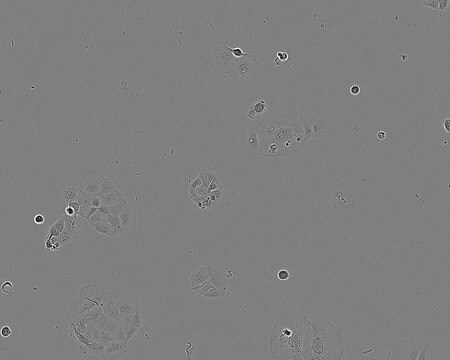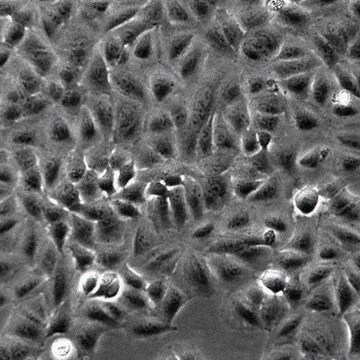CLL1222
Safe Harbor Landing Pad Cell Line HCT-116 Cancer Cells
human male colorectal tissue (Source Disease: Colorectal carcinoma)
About This Item
Produtos recomendados
product name
Safe Harbor Landing Pad Cell Line HCT-116 Cancer Cells,
fonte biológica
human male colorectal tissue (Source Disease: Colorectal carcinoma)
Nível de qualidade
forma
frozen liquid (Vial of Frozen Cells)
modo de crescimento
Adherent
técnica(s)
cell culture | mammalian: suitable
Condições de expedição
dry ice
temperatura de armazenamento
−196°C
Descrição geral
Descrição de linhagem celular
Aplicação
Características e benefícios
Qualidade
Meio de cultura
Informações legais
Palavra indicadora
Warning
Frases de perigo
Declarações de precaução
Classificações de perigo
Met. Corr. 1
Código de classe de armazenamento
8A - Combustible corrosive hazardous materials
Classe de risco de água (WGK)
WGK 2
Ponto de fulgor (°F)
Not applicable
Ponto de fulgor (°C)
Not applicable
Certificados de análise (COA)
Busque Certificados de análise (COA) digitando o Número do Lote do produto. Os números de lote e remessa podem ser encontrados no rótulo de um produto após a palavra “Lot” ou “Batch”.
Já possui este produto?
Encontre a documentação dos produtos que você adquiriu recentemente na biblioteca de documentos.
Conteúdo relacionado
Fluorescently tagged cell lines for drug discovery, and high content imaging analysis; lung cancer knockout, breast cancer knockout, colorectal carcinoma knockout.
Nossa equipe de cientistas tem experiência em todas as áreas de pesquisa, incluindo Life Sciences, ciência de materiais, síntese química, cromatografia, química analítica e muitas outras.
Entre em contato com a assistência técnica





